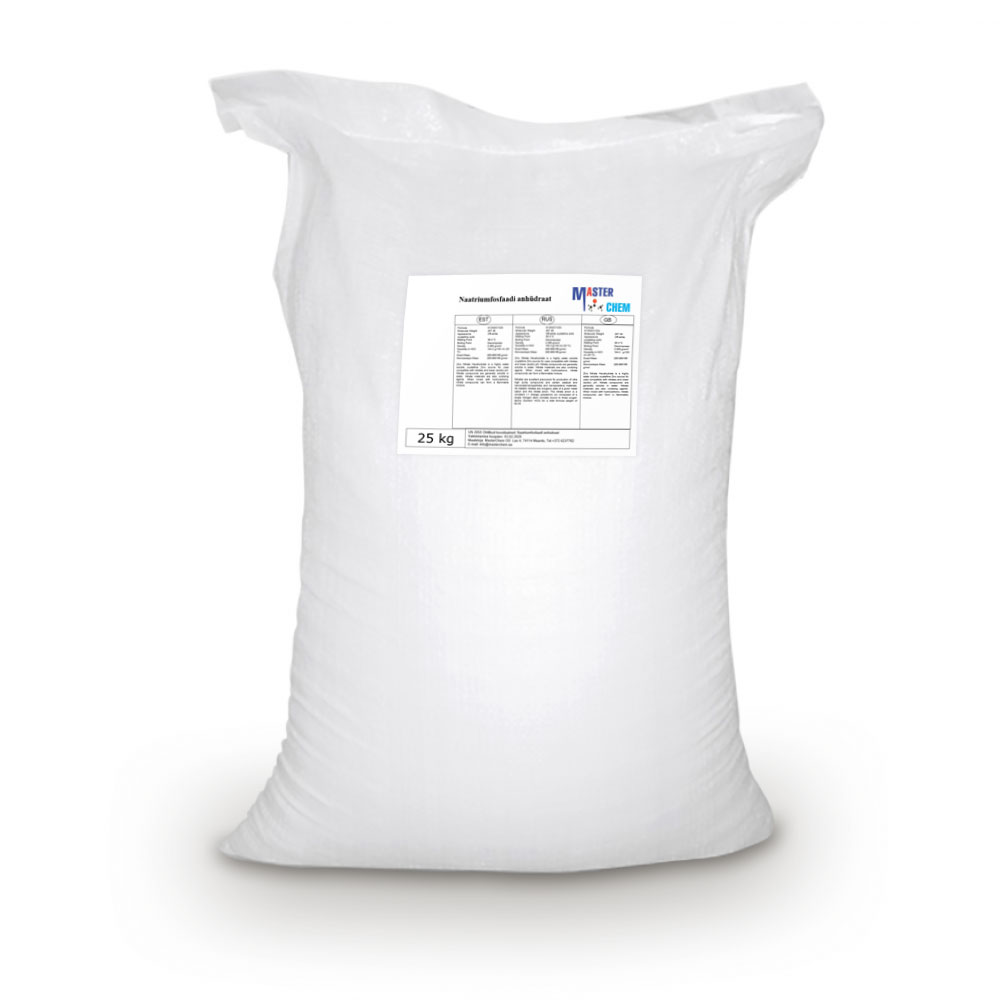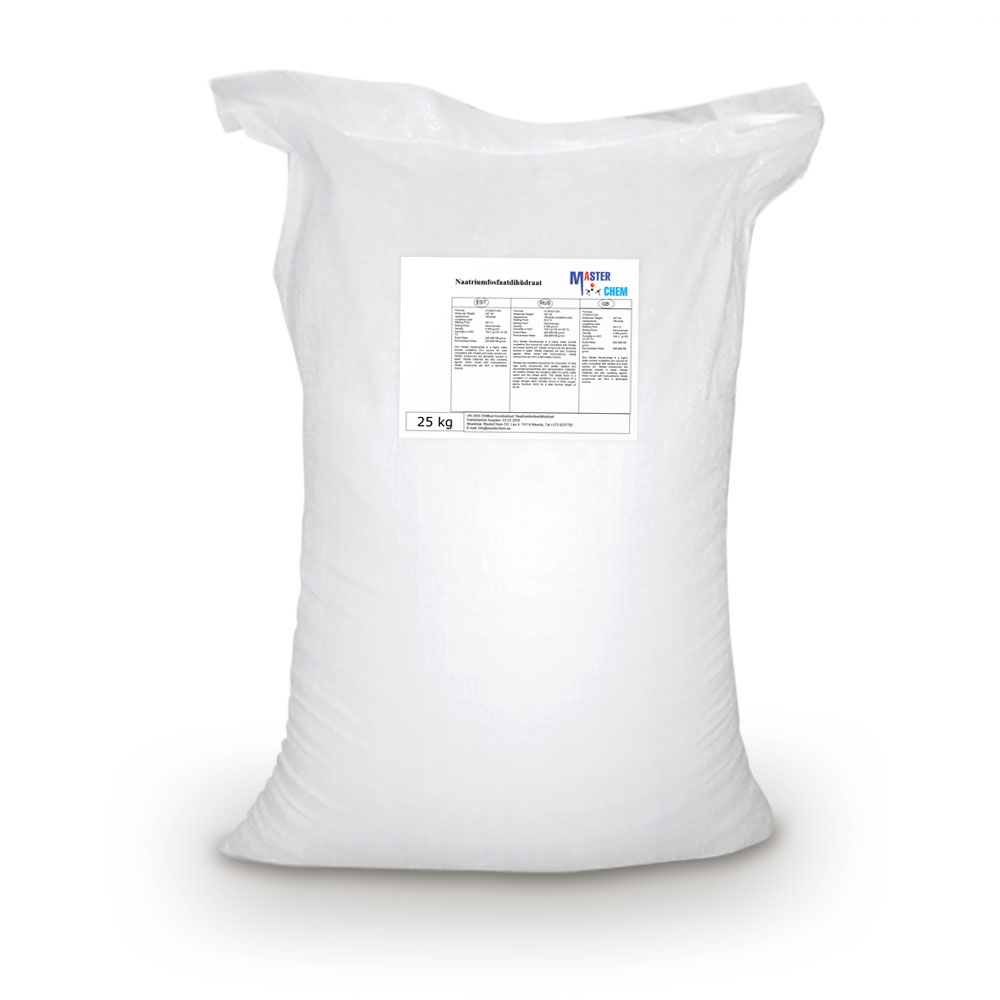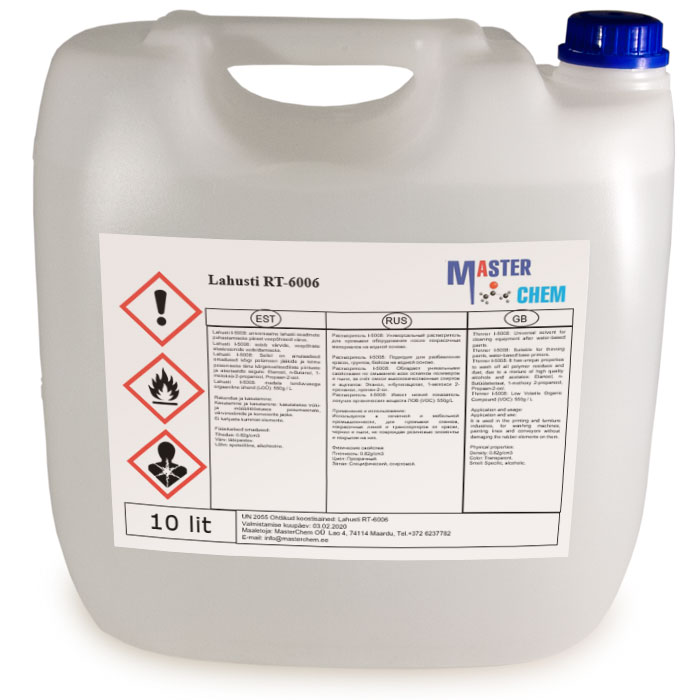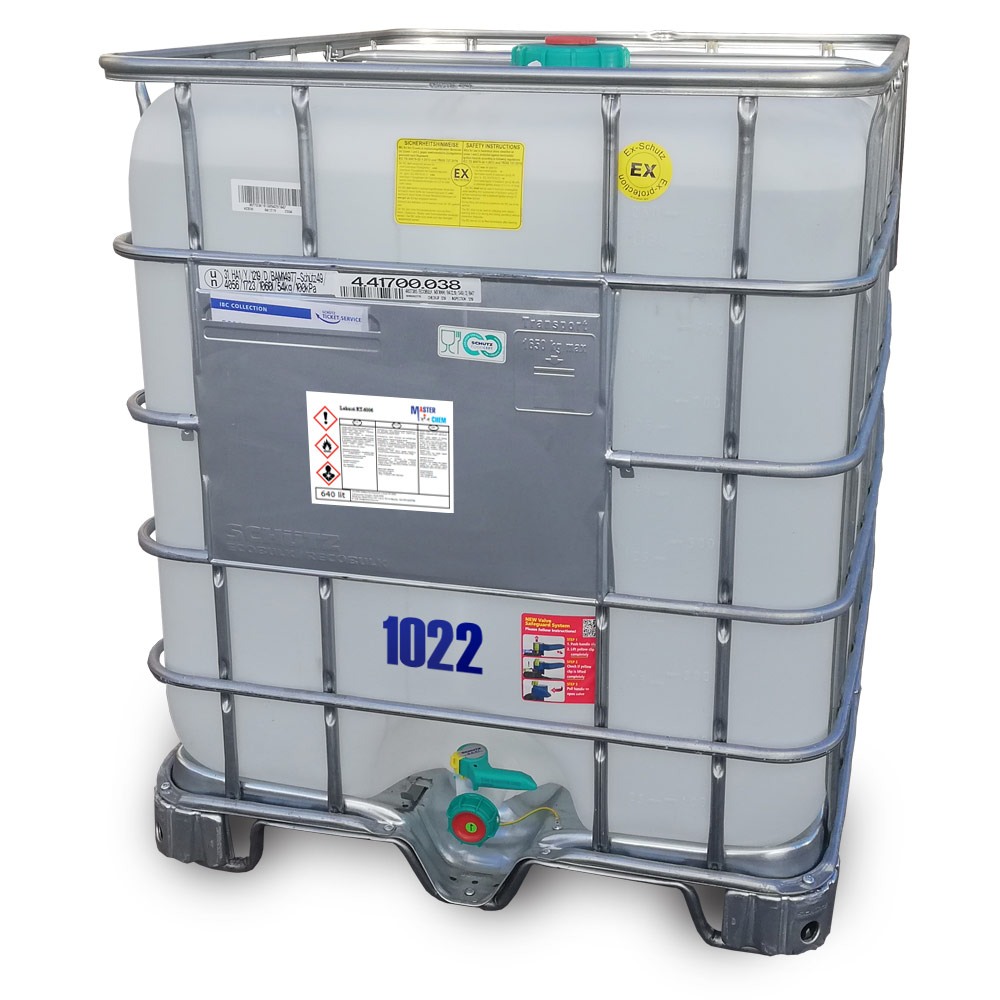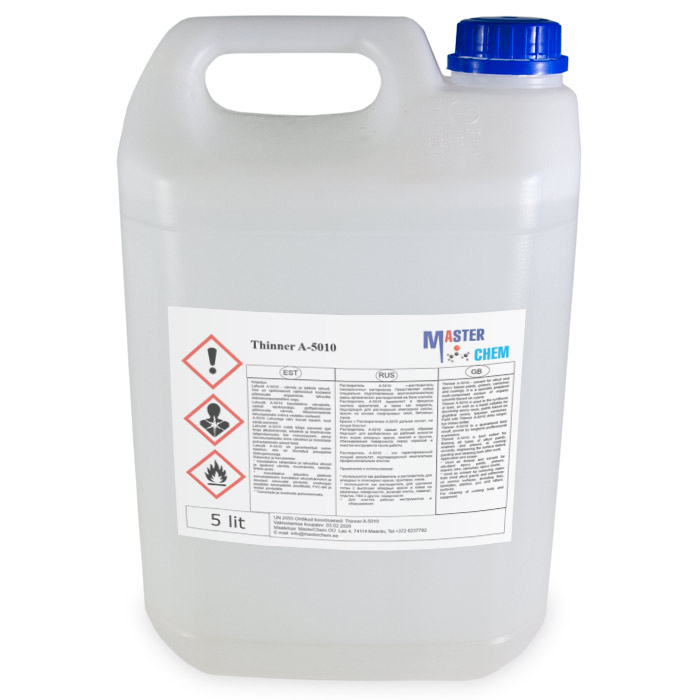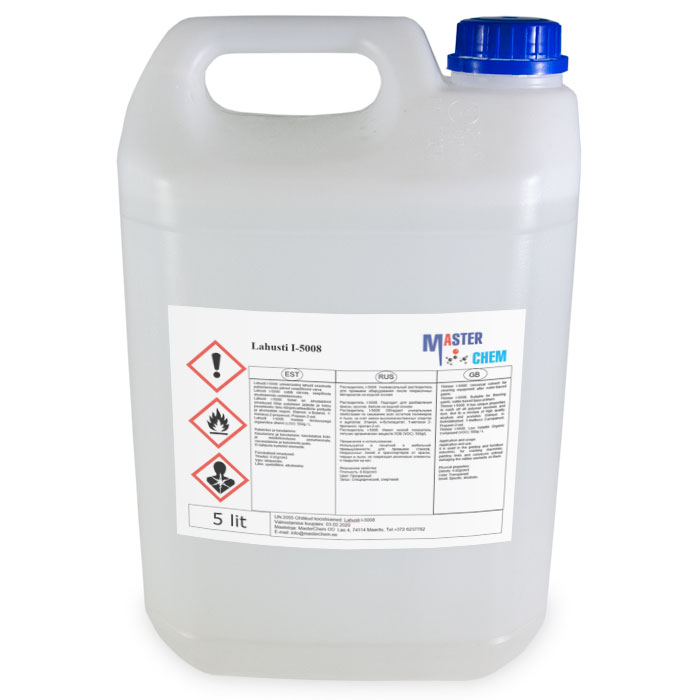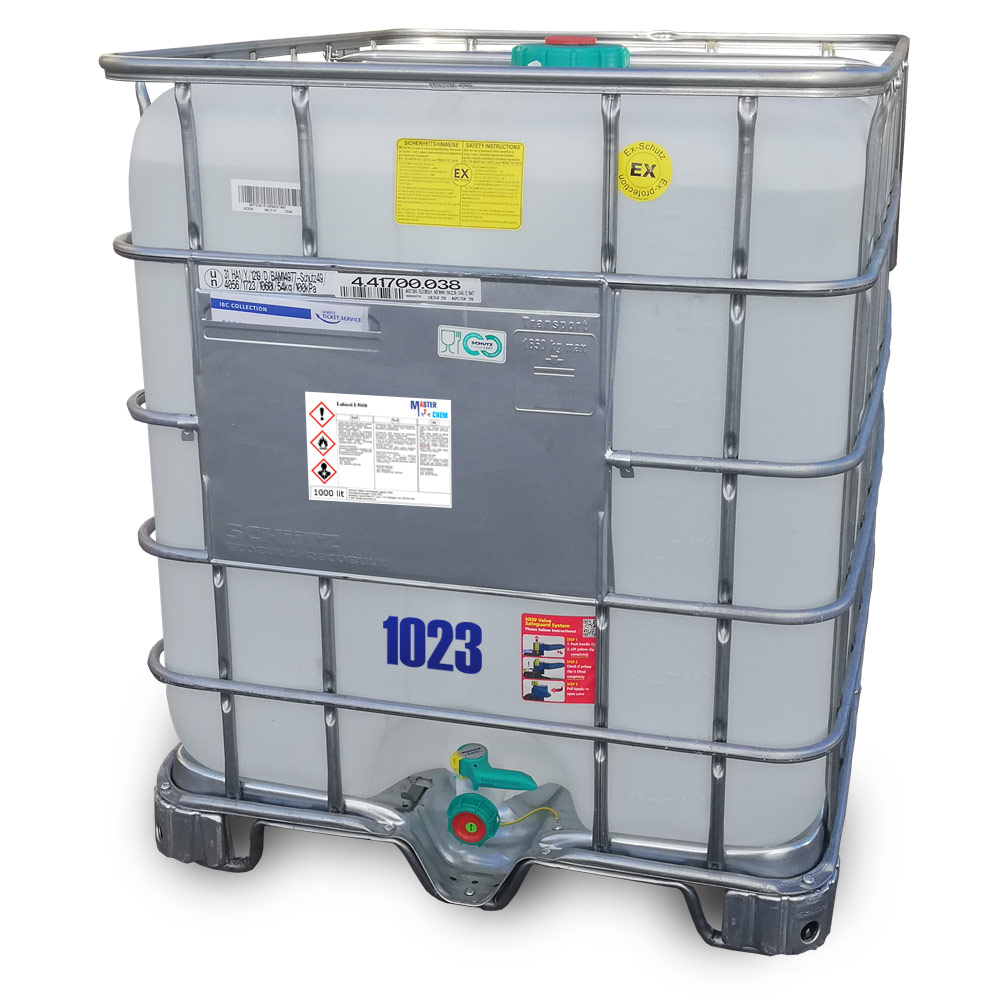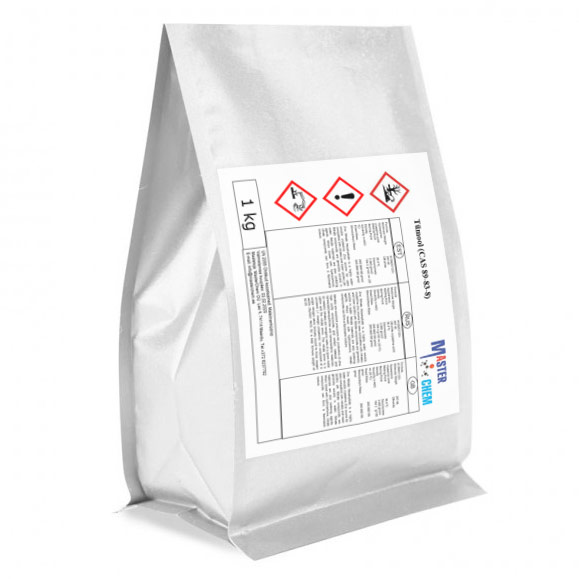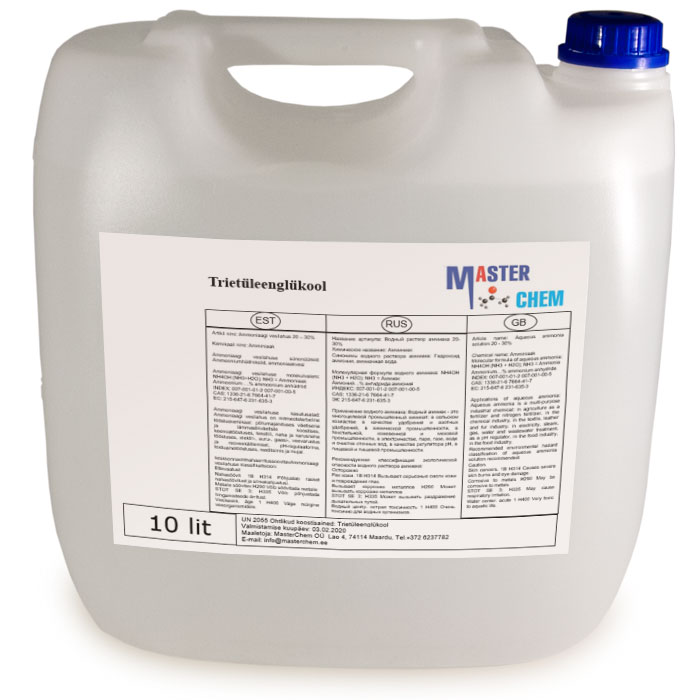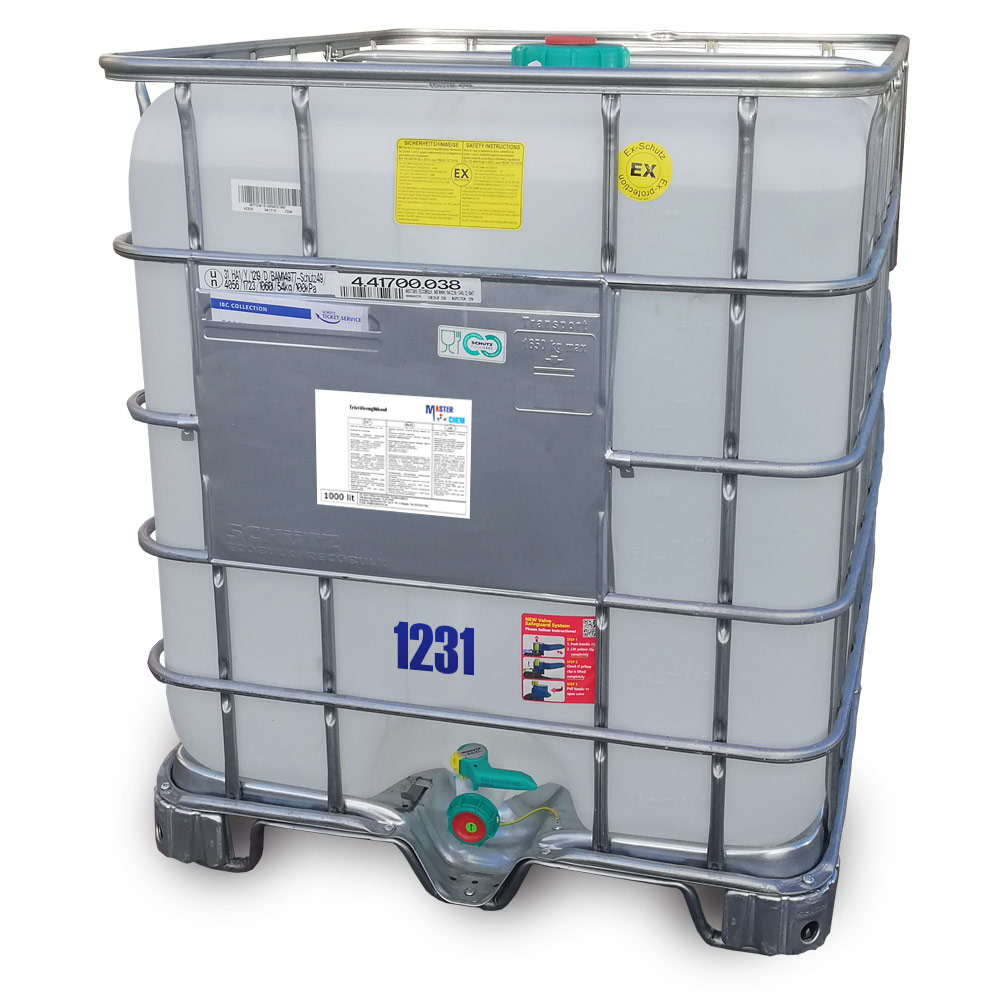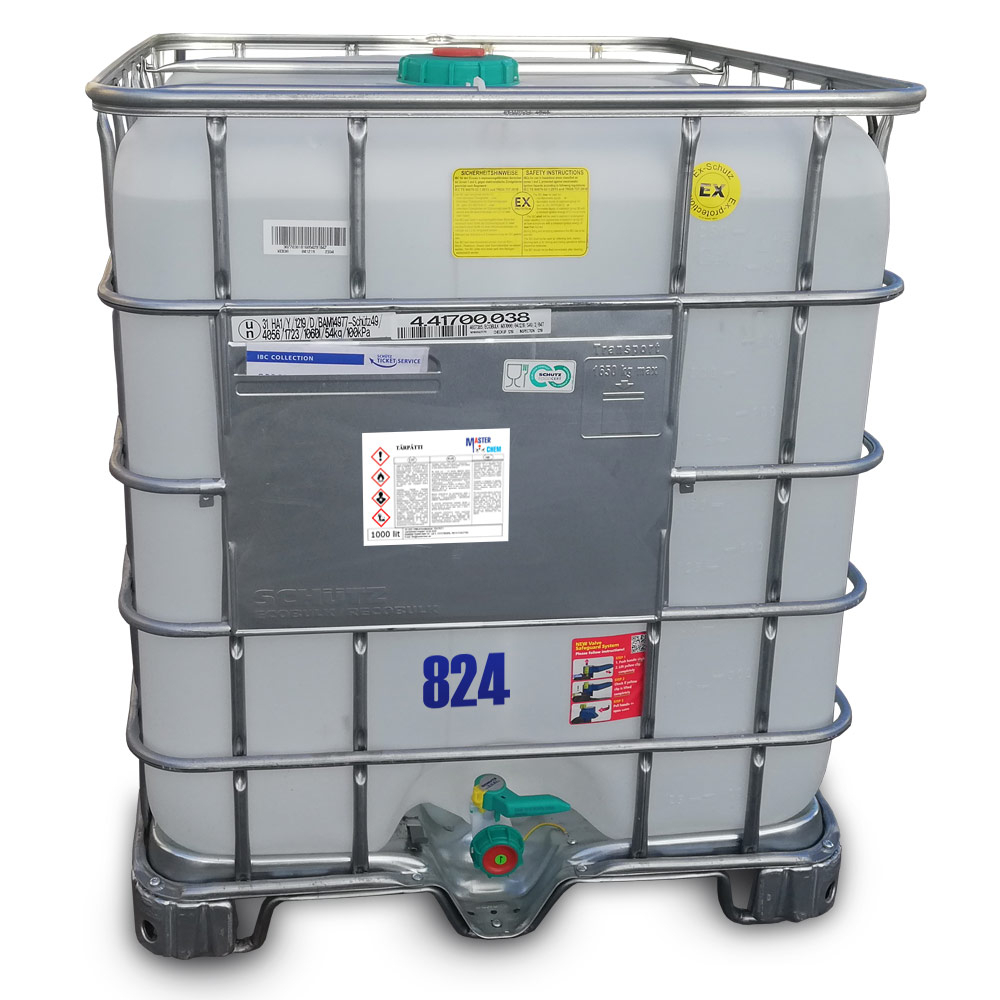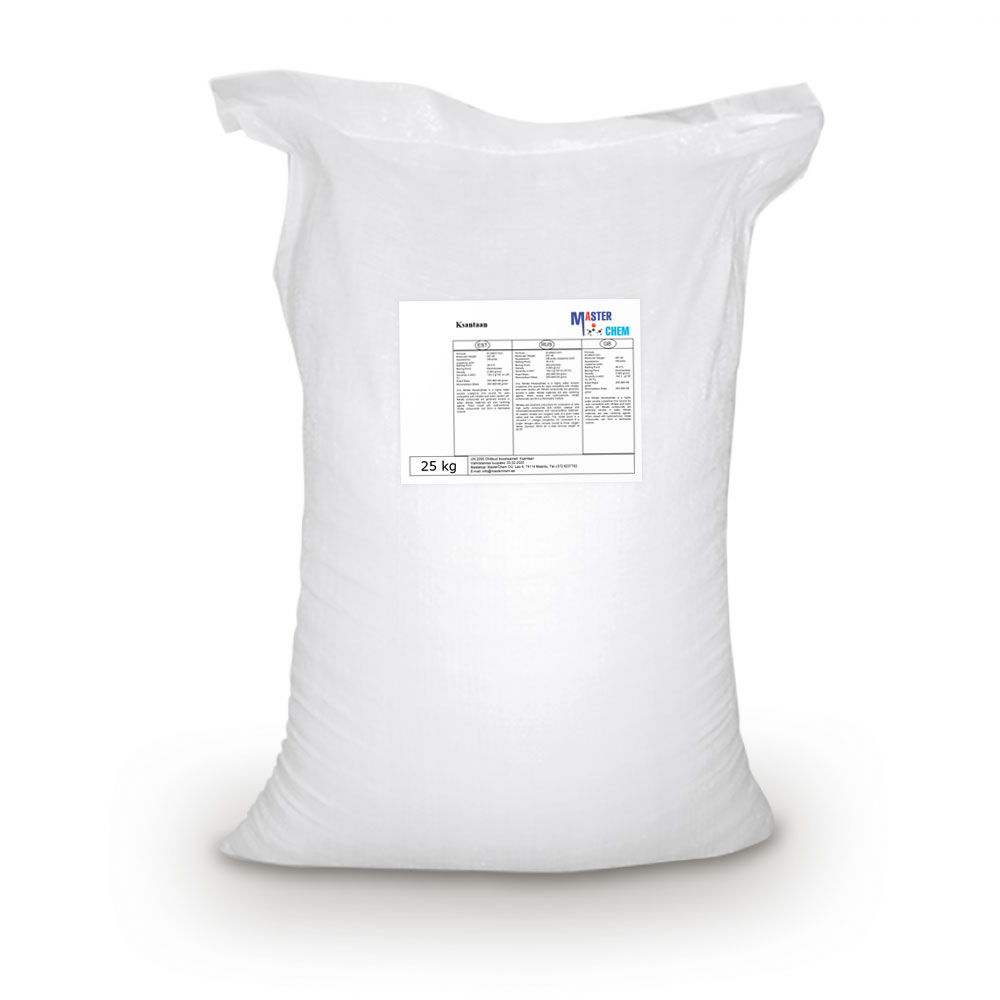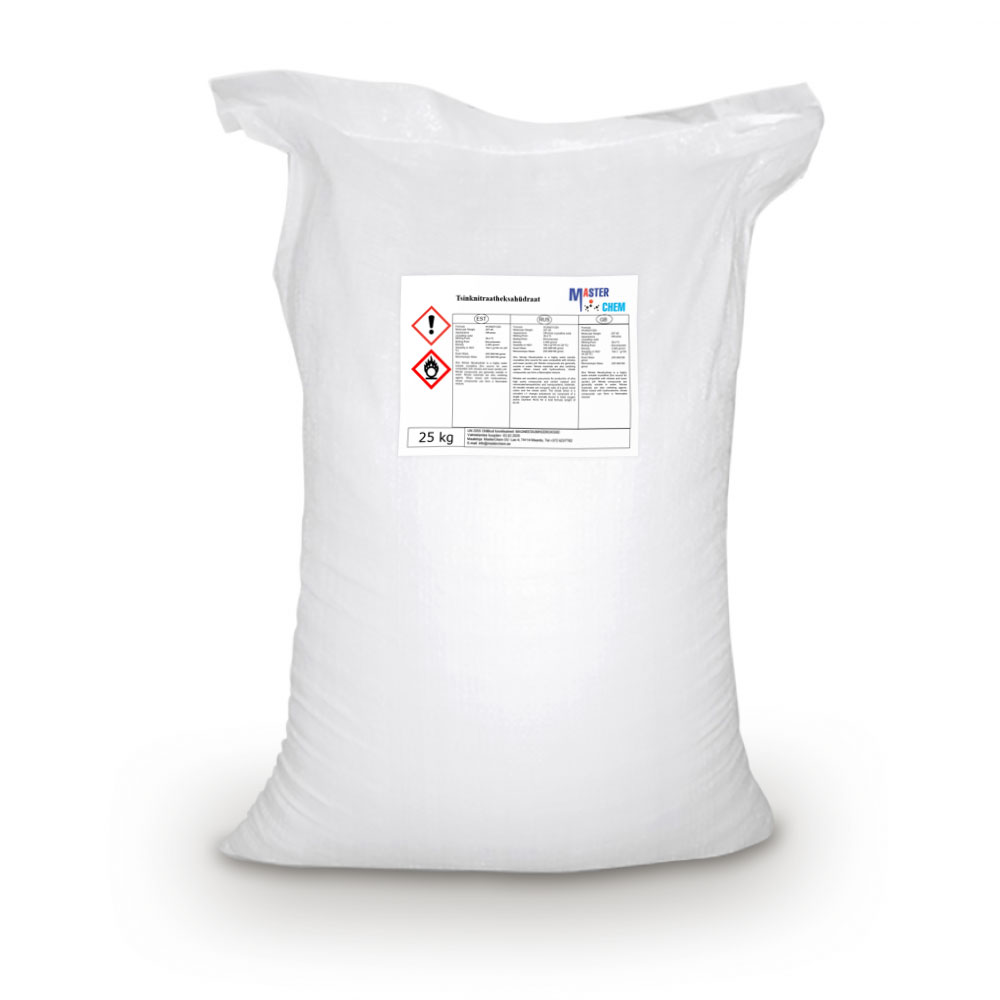Currently Empty: €0.00
Sodium Phosphate Anhydrate (CAS 7558-80-7)
Sodium Phosphate Anhydrate (CAS 7558-80-7)
Monosodium phosphate (MSP), also known as monobasic sodium phosphate and sodium dihydrogen phosphate, is an inorganic compound of sodium with a dihydrogen phosphate (H2PO4−) anion. One of many sodium phosphates, it is a common industrial chemical. The salt exists in an anhydrous form, as well as mono- and dihydrates.
Phosphates are often used in foods and in water treatment. The pH of such formulations is generally adjusted by mixtures of various sodium phosphates, such as this salt. The sodium chloride equivalent value, or E-Value, is 0.49. It is soluble in 4.5 parts water.
Sodium Phosphate Dihydrate (CAS 13472-35-0)
Sodium Phosphate Dihydrate (CAS 13472-35-0)
Sodium phosphate is a generic term for a variety of salts of sodium (Na+) and phosphate (PO43−). Phosphate also forms families or condensed anions including di-, tri-, tetra-, and polyphosphates. Most of these salts are known in both anhydrous (water-free) and hydrated forms. The hydrates are more common than the anhydrous forms.
Solvent RT-6006: Solvent for the production of rubber products
Solvent RT-6006 – is a solvent for the production of rubber products. Produced on the basis of light fractions of dearomatized straight distillation gasoline of low-sulfur petroleum products.
Solvent RT-6006 belongs to the 4th hazard class (low hazard).
Application and usage:
THINNER RT-6006 is used in the rubber industry, for the production of pipes and belts; for the preparation of rubber adhesives, and various mastics, printing inks.
For dissolving and bringing paints and varnishes to a working consistency.
Solvent RT-6006 is also used to degrease fabrics and leather, degrease electrical equipment, surfaces (before painting and not only), washing bearings, fittings before conservation, making special quick-drying oil paints, electrical insulating varnishes, diluting oil, bitumen and ethylene paints and varnishes, epoxy resins, removing small grease and oil stains from all types of fabric; Recommended as fuel for gasoline blowtorches. In addition, it is possible to use this type of gasoline as a fuel for catalytic heating pads, it also finds application in organic chemistry and is most often used in the repair of automatic transmissions, engines and other aggregate units. Indispensable in the optical industry
Solvent RT-6006 Also used for washing parts and fittings before conservation, in the production of artificial furs; in the production of paints and varnishes; for extracting rosin from wood
Thinner A-5010 (CAS 1330-20-7)
Thinner A-5010 – solvent for alkyd end epoxy based paints, primers, varnishes and coatings. It is a specially prepared multi-component mixture of organic solvents based on xylene.
Thinner A-5010 is used in the synthesis of dyes, as well as a liquid suitable for dissolving epoxy resin, paints based on glyphthal resins, bitumen varnishes. Paint with Thinner A-5010 dries longer, but shines better.
Thinner A-5010 Is a quaranteed best result, proven by longterm proffessional experience.
Thinner A-5010 is best suited for thinning all types of alkyd paints, enamels and primers to working viscosity, degreasing the surface before painting and cleaning tools after work.
Thinner BC06-3019
Solvent BC06-3019 – brake cleaner that effectively removes dirt.
A very fast evaporating cleaning agent that removes the smallest oil particles from the surface.
Our product is unique in that it is completely volatile and leaves no residue. Does not contain acetone or acetates. Does not cause corrosion. Can be used with different types of plastics. May cause damage rubber products.
Used to remove grease, oil, soot, brake dust and fluid. Due to its fast drying time it is possible to use the cleaned parts almost immediately and continue the work.
It is also suitable for use as a universal technical cleaner for all mechanical parts for cleaning from oil and other contaminants.
Solvent BC06-3019 can also be used to clean electrical contacts and connections
Physical and chemical properties:
Color: transparent, colorless.
Odor: slight special odor
Thinner I-5008
Thinner I-5008: Universal solvent for cleaning equipment after water-based paints.
Thinner I-5008: Suitable for thinning paints, water-based base primers.
Thinner I-5008: It has unique properties to wash off all polymer residues and dust, due to a mixture of high quality alcohols and acetates: Etanool, n-Butüülatsetaat, 1-methoxy 2-propanool, Propaan-2-ool.
Thinner I-5008: Low Volatile Organic Compound (VOC): 550g / L
Thymol (CAS 89-83-8)
lternate Names: 2-Isopropyl-5-methylphenol; 5-Methyl-2-isopropylphenol
Application: Thymol is a dye that is also known as 5-Methyl-2-(1-methylethyl)phenol
CAS Number: 89-83-8
Molecular Weight: 150.22
Molecular Formula: C10H14O
Supplemental Information: This is classified as a Dangerous Good for transport and may be subject to additional shipping charges.
Triethylene glycol (CAS 112-27-6)
Triethylene glycol (CAS 112-27-6)
Triethylene glycol, TEG, or triglycol is a colorless odorless viscous liquid with molecular formula HOCH2CH2OCH2CH2OCH2CH2OH. It is used as a plasticizer for vinyl polymers. It is also used in air sanitizer products, such as “Oust” or “Clean and Pure”. When aerosolized it acts as a disinfectant. Glycols are also used as liquid desiccants for natural gas and in air conditioning systems. It is an additive for hydraulic fluids and brake fluids and is used as a base for “smoke machine” fluid in the entertainment industry.
Triethylene glycol is a member of a homologous series of dihydroxy alcohols. It is a colorless, odorless and stable liquid with high viscosity and a high boiling point. Apart from its use as a raw material in the manufacture and synthesis of other products, TEG is known for its hygroscopic quality and its ability to dehumidify fluids. This liquid is miscible with water, and at standard atmospheric pressure (101.325 kPa) has a boiling point of 286.5 °C and a freezing point of -7 °C. It is also soluble in ethanol, acetone, acetic acid, glycerine, pyridine, aldehydes; slightly soluble in diethyl ether; and insoluble in oil, fat and most hydrocarbons.
Trisodium Phosphate Dodecahydrate (CAS 10101-89-0)
Trisodium Phosphate Dodecahydrate (CAS 10101-89-0)
Sodium phosphate tribasic dodecahydrate is also known as trisodium phospate or TSP. It is a highly soluble in water and widely used as a cleaning agent. The pH of a 1% solution is typically around 12, making this reagent sufficiently alkaline for saponification of grease and oils. In combination with surfactants, TSP is an excellent agent for cleaning everything from laundry to concrete driveways. This versatility and low manufacturing price made TSP the basis for a plethora of cleaning products sold in the mid-20th century. Trisodium phosphate is used in the isolation of mycobacteria, including culturing of tubercle bacilli. Has been used as a protein precipitant in certain applications and in co-precipitation and fractionization of nucleotides. May be used for the preservation of biologically active soil samples. Because of the alkaline pH, TSP disrupts cytoplasmic and outer membranes of Salmonella enterica cells making it useful in preventing the spread of bacteria.It is used in photographic developing, clarifying sugar, removing boiler scale, softening water and manufacturing of paper. They are added to many foods as an emulsifier to prevent oil separation. It can be utilized as a leavening agent. Some instances of these foods include the batter coating on breaded fish or chicken, and commercially baked cakes. Adding this item to food increases the shelf life of the food, maintaining the texture and visual aspect of the food.
Turpentine (CAS 9005-90-7)
Turpentine (which is also called spirit of turpentine, oil of turpentine, wood turpentine, terebenthene, terebinthine and (colloquially), turps) is a fluid obtained by the distillation of resin harvested from living trees, mainly pines. It is mainly used as a solvent, and as a source of material for organic syntheses.
Turpentine is composed of terpenes, primarily the monoterpenes alpha- and beta-pinene, with lesser amounts of carene, camphene, dipentene, and terpinolene.
CAS: 9005-90-7
Xanthan gum (CAS 11138-66-2)
Xanthan gum (CAS 11138-66-2)
Xanthan gum (/ˈzænθən/) is a polysaccharide with many industrial uses, including as a common food additive. It is an effective thickening agent and stabilizer to prevent ingredients from separating. It can be produced from simple sugars using a fermentation process, and derives its name from the species of bacteria used, Xanthomonas campestris.
Zinc nitrate hexahydrate (CAS 10196-18-6)
Zinc nitrate hexahydrate (CAS 10196-18-6)
Zinc Nitrate Hexahydrate is a highly water soluble crystalline Zinc source for uses compatible with nitrates and lower (acidic) pH. Nitrate compounds are generally soluble in water. Nitrate materials are also oxidizing agents. When mixed with hydrocarbons, nitrate compounds can form a flammable mixture. Nitrates are excellent precursors for production of ultra high purity compounds and certain catalyst and nanoscale(nanoparticles and nanopowders) materials. All metallic nitrates are inorganic salts of a given metal cation and the nitrate anion. The nitrate anion is a univalent (-1 charge) polyatomic ion composed of a single nitrogen atom ionically bound to three oxygen atoms (Symbol: NO3) for a total formula weight of 62.05.

